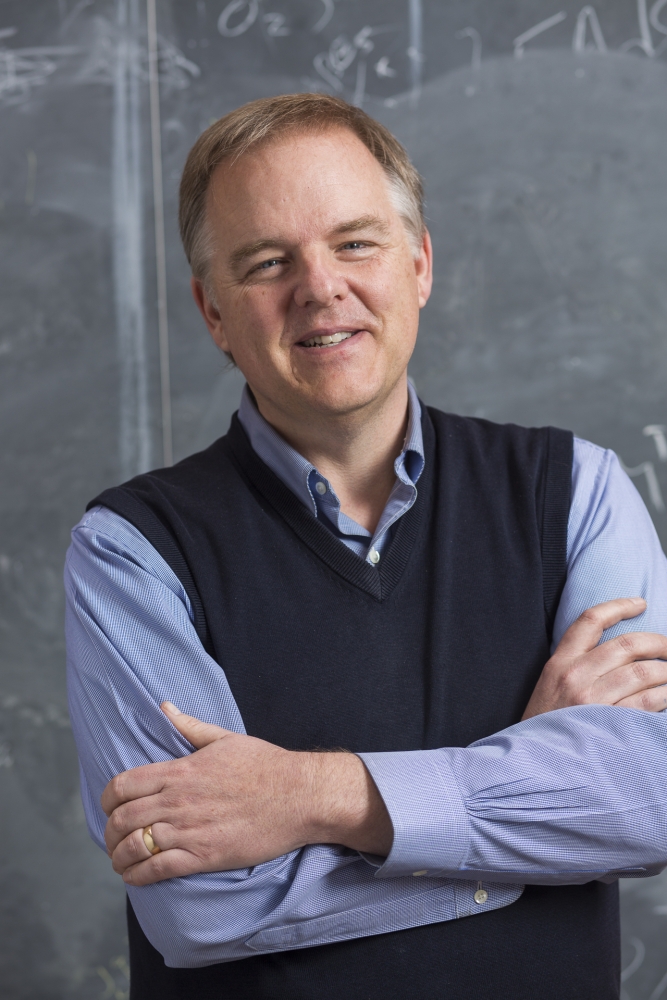
A Shining Star
Nobel Prize laureate David Gross, a permanent member of UC Santa Barbara’s Kavli Institute for Theoretical Physics (KITP), wanted to be the first to break the news to KITP Director Lars Bildsten. So, with apologies for the early hour, he phoned his colleague at 6:30 a.m. to congratulate him for being elected a member of the National Academy of Sciences (NAS).
Bildsten, who was in New York City and already awake, was thrilled. “That was wonderful news,” he said. “It’s a rare honor that provides an occasion to celebrate what one has accomplished so far in one’s career. The acknowledgement is quite profound.”
An astrophysicist who studies stellar evolution and explosions, Bildsten is also the Frederick W. Gluck Chair in Theoretical Physics at UCSB. He joins 83 other new members and 21 foreign associates, all recognized for their distinguished and continuing achievements in original research. Foreign associates are nonvoting members with citizenship outside the United States.
“We are proud and delighted to congratulate Professor Lars Bildsten on his election to the National Academy of Sciences,” said Chancellor Henry T. Yang. “Election by one’s peers to this most prestigious academy is not only a milestone achievement but also a deeply meaningful recognition of years of hard work, pioneering research and exceptional contributions. Through his original and influential work on the structure, life and death of stars, as well as his visionary leadership of our Kavli Institute for Theoretical Physics, Professor Bildsten is helping to advance the field of stellar astrophysics and deepen our understanding of the universe.”
Bildsten joined UCSB’s Department of Physics and the KITP in 1999; he became KITP director in 2012. Prior to his arrival at UC Santa Barbara, he was awarded an Alfred P. Sloan Foundation Fellowship and the Helen B. Warner Prize from the American Astronomical Society for his fundamental work on stellar structure, including nuclear burning on neutron stars, the role of neutron stars as gravity wave sources and the theory of lithium depletion. He also received a Hellman Family Faculty Fund Award and was designated a Cottrell Scholar.
Bildsten received his Ph.D. in theoretical physics from Cornell University, where he held a Fannie and John Hertz Graduate Fellowship. He then spent three years at the California Institute of Technology as the Lee A. DuBridge Research Fellow in Theoretical Astrophysics and received a Compton Fellowship from NASA.
In addition, Bildsten was the 2000 Edwin Salpeter Lecturer at Cornell, the 2004 Biermann Lecturer at the Max-Planck Institute for Astrophysics and the 2016 Jesse Greenstein Lecturer at Caltech. He is presently an associate fellow of the Gravity and Extreme Universe Program of the Canadian Institute for Advanced Research.
In 2017, Bildsten won the Dannie Heineman Prize for Astrophysics, awarded jointly by the American Institute of Physics and the American Astronomical Society. He was recognized “for his leadership and observationally grounded theoretical modeling that has yielded fundamental insights into the physics of stellar structure and evolution, compact objects and stellar explosions.”
This new accolade from NAS, Bildsten said, has only boosted his momentum, adding that he is eager to continue his theoretical research in time domain astrophysics, a field dramatically enabled by many new space and ground-based telescopes, especially the Zwicky Transient Facility and the Las Cumbres Observatory.
NAS is a private, nonprofit institution established under a congressional charter signed by President Abraham Lincoln in 1863. It recognizes achievement in science by election to membership and — with the National Academy of Engineering and the National Academy of Medicine — provides science, engineering and health policy advice to the federal government and other organizations.



